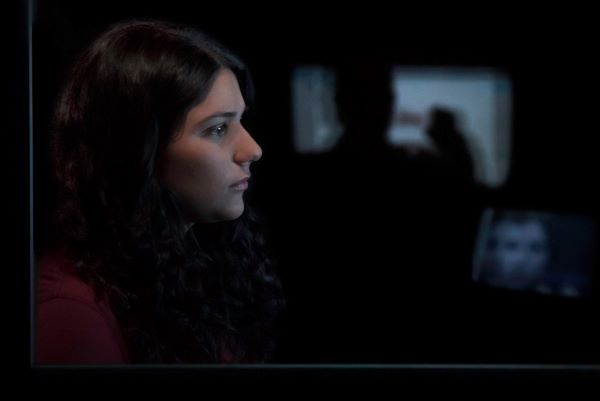
Back in May, the Israeli-Palestinian conflict violently erupted yet again as a series of rocket attacks between the two sides, which resulted in a disproportionate death total. More than 200 Palestinians were killed compared to the number of Israeli deaths, but unlike previous coverage of the conflict, pro-Palestinian social media got there first. Videos uploaded to TikTok, Twitter, and Instagram presented the rocket attacks and fallout in such vivid detail that neither the Israeli government nor Western news outlets could sidestep them, thus bringing more attention to the stronger military response Palestinians face on a regular basis. The images were laid bare for everyone. Whether those images could change people’s minds, however, is a different story.
This idea of biased perception lies at the center of The Viewing Booth, a documentary by Israeli filmmaker Ra’anan Alexandrowicz. At Temple University, Alexandrowicz asked students interested in Israel to watch and comment on videos from several organizations like B’Tselem about Israel’s occupation of Palestinian territories, with his camera recording their reactions. The goal, he explains, was to analyze a theory made by Virginia Woolf: roughly that observing the same image concerning warfare could produce similar human emotions among viewers. Seven students took Alexandrowicz’s test, but we only see a few of them briefly. His real focus is one subject, a young woman named Maia Levy, and how her reactions complicate this theory by repeatedly resisting the narratives shown on screen.
Maia, as Alexandrowicz later admits, is exactly the kind of person he makes documentaries for. Being Jewish-American with Israeli parents, she represents a challenge: she’s very pro-Israel and skeptical of footage that presents the Israeli military in a bad light. When shown the first B’Tselem clip—a father waking his two children out of bed so soldiers can ask them questions in the middle of the night—Maia’s gaze is drawn less to the family and more toward cinematic details that, in her opinion, don’t add up. Why does the son momentarily forget his name? What is the context behind this raid? Why does the dad keep filming even after the soldiers have left? For her, it feels too conveniently staged to register as authentic. Not that she doesn’t believe these things don’t happen. But often, her reactions look for justification to dismiss the horrific as part of a theoretically broader story.
The Viewing Booth is part found-footage documentary and part YouTube react video. Beyond the video clips, its only camera shots are close-ups of Maia’s face and a panning security camera view of the adjacent room where Alexandrowicz plays the footage. Yet the more we watch these selected videos, the more we learn about Maia’s thought process. She shows anger and disgust at bad behavior, and even perceives one pro-Israel video as similarly “fake” for how it stages a soldier’s benevolence.
Yet affiliating negative behavior with the Israeli side alone is deeply uncomfortable. When observing a bunch of men throw rocks (while making vulgar dick jokes) at the person filming them, she’s frustrated that nearby soldiers do nothing to interfere. But it’s not until Maia realizes they’re wearing yarmulkes that her reactions become more conflicted. She’s still angry, but she questions whether something happened beforehand to raise tensions. That citizens acted this way because they felt like it cannot be all there is, even if she’s witnessing exactly that, because accepting such a statement possibly means rejecting beliefs that Maia holds quite dearly.
Though Maia’s reactions drive the film’s investigation, these biases eventually receive their own critique. Alexandrowicz dedicates his final act to bringing Maia back into the booth months later and having her explain what she was thinking regarding those videos, but this time, the director gently pushes back. He not only contrasts her reactions to these shocking images with his own but attempts to surmise why she develops such a resistance where one doesn’t need to be implemented. The resulting conversation is honest but hesitant, acknowledging that ideologies blind people but also questioning whether media communication exposes truth or merely creates a specific truth for viewers to accept.
The Viewing Booth provides a brief glimpse into whether Woolf’s photo theory feels capable of measuring up in the social media era. Information is now everywhere, but individual media bubbles tell us what we want to see and affirm their meaning. For Maia, picking an ideological position means putting yourself on the line. The takeaway, then, is not what’s factually proven in photos or videos but what helps reaffirm your beliefs.






Leave A Comment